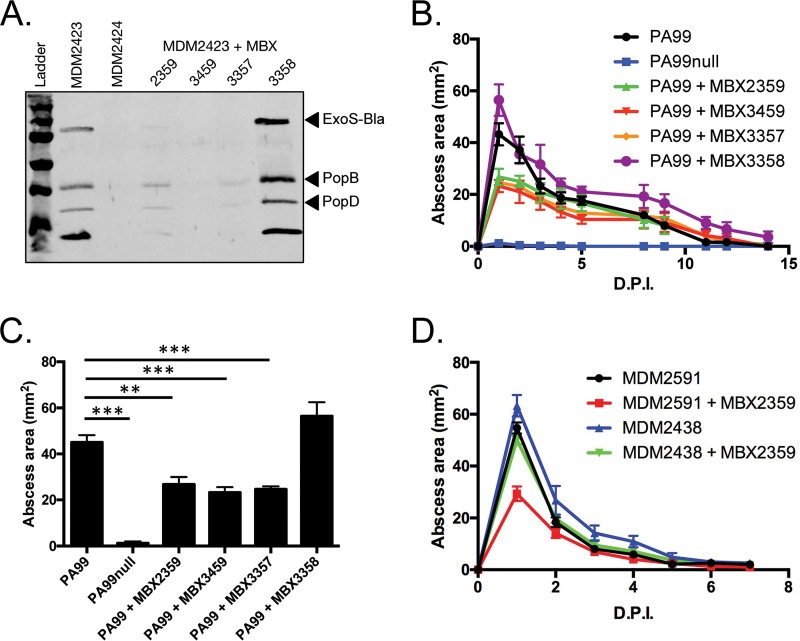FIG 8.
P. aeruginosa abscess formation in the presence of T3SS inhibitors. (A) P. aeruginosa strains were grown under secretion-inducing conditions in the presence or absence of T3SS inhibitors. The secretion of type III effectors into the supernatant was examined by Western blotting. (B, C) C57BL/6J mice were infected in the subcutaneous space with P. aeruginosa PA99 strains in the presence or absence of various phenoxyacetamide T3SS inhibitors (the final concentration of 100 μM was delivered in the inoculum), as indicated. Five mice were infected per group, and the experiment was repeated twice. (B) The abscess size was measured over the subsequent 2 weeks postinfection. (C) The peak abscess size (at day 1 postinfection) was plotted in a bar graph. (D) P. aeruginosa strains susceptible or resistant to phenoxyacetamide compounds were injected into the subcutaneous space of C57BL/6J mice in the presence or absence of the inhibitor MBX 2359. Experiments were performed on two different days, and the results were pooled. A total of 10 mice per group were used. The abscess size was measured over the subsequent 2 weeks. Data are means plus standard errors of the means. Statistics were calculated by a one-way ANOVA and Dunnett's multiple-comparison test. **, P < 0.01; ***, P < 0.001. D.P.I., days postinfection.

